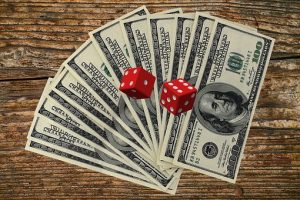
A Sveriges Riksbank working paper may help economists better understand quantum technology — and prepare them for the possibility of quantum money.
While the idea of quantum money is not new, most research attention has been focused on the power of quantum computing to protect — and disrupt — electronic commerce, such as cracking cryptographic codes or securing information about transactions over the quantum internet. However, quantum money is different.
According to the Swiss central bank researchers, who posted their paper online, the idea quantum money can be traced back to the late 1960s to early 1970s as a way to help avoid counterfeiting and forging, acts that can cost billions of dollars and that are used by bad actors seeking to undermine economies and governments.
The first quantum money scheme was introduced in by Stephen Wiesner, a Columbia University graduate student in the 1970s, but remained unpublished until 1983. Wiesner’s idea takes advantage of quantum’s no-cloning theorem that indicates it is not possible to clone an unknown quantum state. In Wiesner’s quantum money proposal, the central bank generates a classical serial number and a random classical bill state, according to the researchers. The classical serial number is unique and public. Only the central bank knows the classical bill state, however, which encodes it in a quantum state that is hidden from the bill holder.
The researchers point out that the idea has several drawback, including its reliance on online verification, which makes it inferior to cash. Initially, of course, quantum technology in the late 20th century was not mature enough to create quantum money and the proposal was largely conceptual. However, as quantum computing advances, this may no longer be the case, the researchers suggest.

Other ideas — about nine different proposals altogether — followed, the researchers report. The differences between the schemes are mainly in the degree to which that they allow anonymity. According to the researchers, the forms of quantum money can generally be stratified into bills, coins and lightning schemes, and further categorized into private and public schemes.
The quantum coin proposal was developed around 2010. The quantum coin is a form of quantum money “in which all quantum money states are exact copies of each other and are, thus, untraceable.”
There are drawbacks on this scheme, as well, according to the researchers: “Notice that constructing a coin scheme is conceptually harder than a bill scheme: the no-cloning theorem states that it is impossible to clone a quantum state, given a single copy of it. To prove unforgeability for quantum coins, we need a strengthened version of this theorem in which polynomially many copies of the state are available to the counterfeiter.”
The research team also included a tutorial on quantum computing in the paper.
The team includes Isaiah Hull, of Research Division, Sveriges Riksbank, Stockholm, Sweden; Or Sattath, of Department of Computer Science, Ben-Gurion University, Beersheba, Israel; Eleni Diamanti, of LIP6, CNRS, Sorbonne Universite, Paris, France and Göran Wendin, of the Department of Microtechnology and Nanoscience, Chalmers University of Technology,Gothenburg, Sweden.
If you found this article to be informative, you can explore more current quantum news here, exclusives, interviews, and podcasts.



















